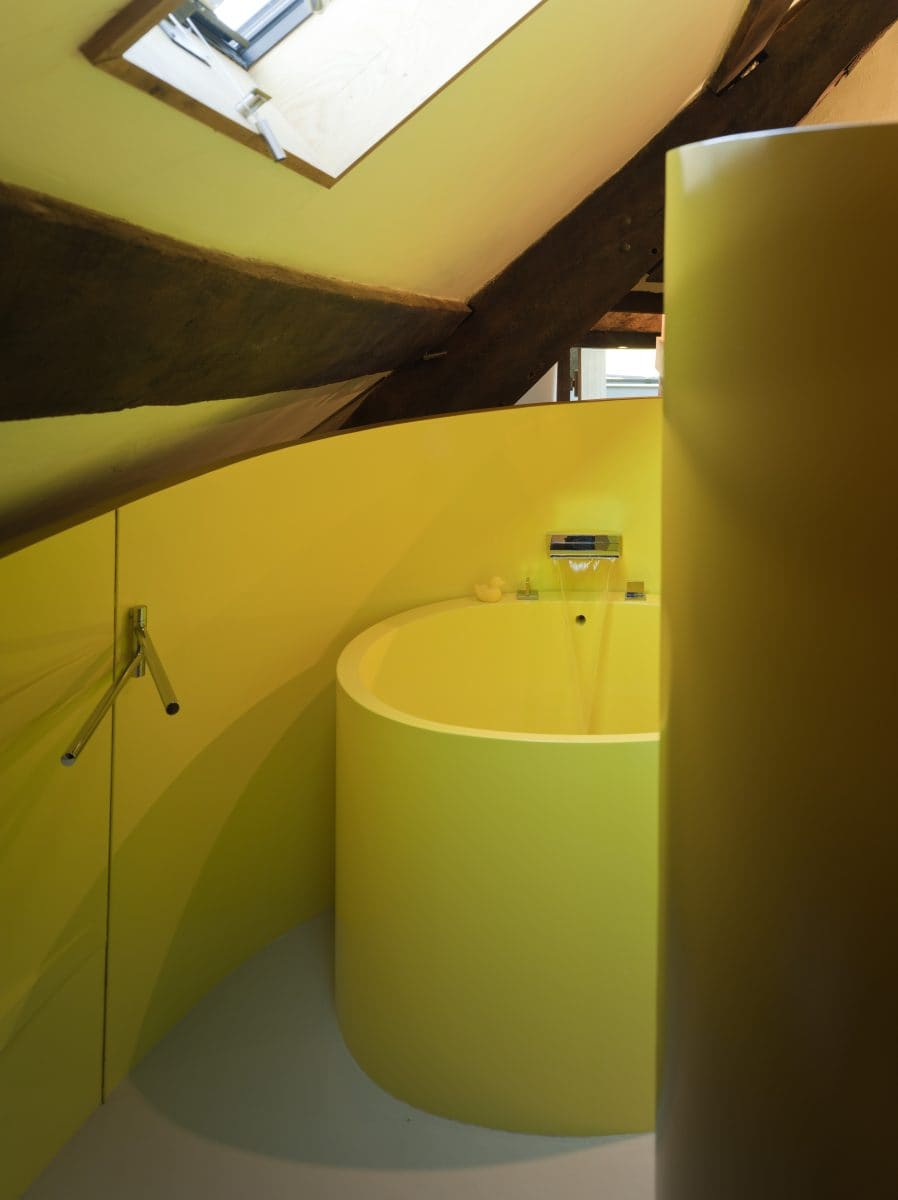
Communion was instructed by a client who had recently purchased a dilapidated farmhouse in the Black Mountains. The brief was to conserve and renovate the house and to create a noble, striking and contemporary family home. Communion was also employed to manage the delivery of this project.
The Dwelling
The dwelling is a Grade II farmhouse in its own land. It is in a secluded position on the Black Mountains just below the treeline and it enjoys views across the Olchon Valley. A stream, which runs through the property, can be heard nearby.
The farmhouse dates from the 14th century and it was likely that originally the house consisted of a single space open to the ridge, which allowed smoke from a central hearth to escape. At this time it would have been an all-timber construction comprising three oak cruck frames, timber framed walls and a thatched roof.
Over time, technological advances allowed for the construction of two stone stacks which divided the space both horizontally and vertically and gave access to the first floor via two stone staircases. The original timber frame walls were replaced with stone and its thatched roof was replaced with stone slates.
The house had a rich and noble history but over recent decades the dwelling had become dilapidated and overgrown and when the client approached us it was in need of urgent renovation and conservation.
The Brief
The client asked us to conserve and renovate the house so that it could become a comfortable and contemporary family home. We were also employed to manage the delivery of this project. The client specified that:
- local skills and materials should be used wherever possible
- traditional methods should be used to conserve the property
- effort should be taken to create an environmentally sustainable home.
The Solution
Communion’s approach to the project was pragmatic:
- existing features that were not in need of repair would be retained untouched
- where repair was required it would be carried out using traditional methods and materials
- where new installations were needed we would develop lightweight, freestanding insertions using cutting edge methods and materials, and a bold colour palette. These insertions were conceived as reversible, so that in time they could be removed without any damage to the historic fabric.
This innovative approach was approved by the client. It also secured planning consent and listed building consent as it sought to retain the integrity of the existing fabric and structure, whilst the new and unique installations would be clearly identifiable. For example, freestanding organically styled en suites in bold colours contrast against lime-based pigments on lime plaster walls.
The Outcome
Our client is thrilled with the outcome; a traditional farmhouse renovated to include contemporary features and built-in sustainability.
We are grateful to the client for sharing our appreciation of careful conservation combined with bold and groundbreaking design. Credit is also due to trusting planning and conservation officers and a team of highly skilled builders, craftsmen and fabricators.


















































































